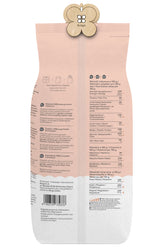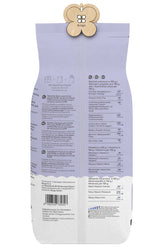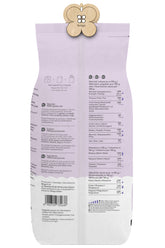Boric acid, also known as orthoboric acid or Acidum boricum, is an important chemical compound used in numerous laboratories and industrial operations. With its unique structure and versatile properties, it has established itself as an indispensable reagent in chemistry, biology, and pharmacy. In this blog post, we want to take a closer look at the properties and applications of boric acid.
Chemical Structure and Properties of Boric Acid
Boric acid is a crystalline, colorless compound consisting of boron, oxygen, and hydrogen. The chemical formula is H3BO3. At the molecular level, boric acid has a planar structure where the boron atom is surrounded by three oxygen atoms. This arrangement gives the compound a weak acidic effect.
The most important physical properties of boric acid include:
- Melting point: 169°C
- Boiling point: 300°C (with decomposition)
- Solubility in water: 4.7 g/100 ml at 20°C
- Solubility in ethanol: 4.0 g/100 ml at 20°C
Furthermore, boric acid in diluted form is weakly acidic, with a pH value of about 5.1 in aqueous solution. This property makes it a useful buffer and titration agent in chemical analyses.
Occurrence and Production of Boric Acid
Boric acid occurs naturally in the form of borates in the Earth's crust, especially in volcanic regions. The largest natural deposits are found, for example, in Turkey, the United States, Argentina, and Chile.
Industrially, boric acid is mainly obtained by the reaction of borates with sulfuric acid or hydrochloric acid. This process leads to the release of boric acid, which is subsequently purified and crystallized. Other methods for obtaining boric acid include extraction from seawater or recovery from industrial wastewater.
Applications of Boric Acid in Laboratories and Industry
The versatile properties of boric acid make it a valuable tool in numerous application areas. Some of the most important fields of application are:
1. Chemical Analyses and Titrations
Due to its acidic effect, boric acid is used as a buffer and titration agent in analytical chemistry. It is used, for example, to determine hydroxide or carbonate content.
2. Fire Protection and Flame Retardation
Boric acid is an effective flame retardant and is therefore used in fire protection products such as fire-retardant paints, wood impregnations, or textiles. It hinders the spread of fire by reducing the release of flammable gases.
3. Cosmetics and Personal Care
In the cosmetics industry, boric acid serves as a preservative, pH regulator, and antioxidant in products such as creams, lotions, or shampoos. It is also used in medications for treating skin conditions.
4. Agriculture and horticulture
In agriculture, boric acid is used as a fertilizer to compensate for boron deficiency in soils. Additionally, it can serve as a fungicide and insecticide for pest control.
5. Nuclear technology
In nuclear power plants, boric acid is used as a neutron absorber in the cooling water to control the chain reaction and enhance reactor safety.
6. Pharmaceutical industry and medicine
In medicine, boric acid is used as an antiseptic, disinfectant, and wound irrigation solution. Furthermore, it is used in pharmacy as an excipient in medications.
7. Laboratory chemistry
Boric acid is a versatile reagent in chemical laboratories. It serves, among other things, as a buffer, complexing agent, precipitating agent, and drying agent in various analytical procedures.
This enumeration shows that boric acid plays an important role in a variety of industries and application areas. Its unique properties make it an indispensable tool in laboratories and industry.
Safety aspects and handling of boric acid
Although boric acid is generally considered relatively safe, some safety aspects must be observed when handling it:
- Boric acid is slightly toxic if swallowed and can cause liver and kidney damage in high doses.
- Contact with the eyes can cause irritation from boric acid.
- Inhalation of boric acid dusts poses the risk of respiratory irritation.
- Boric acid is not flammable, but can release toxic fumes when heated.
Therefore, it is important to use appropriate protective measures such as gloves, safety glasses, and good ventilation when handling boric acid. Spilled boric acid should be wiped up immediately and disposed of properly.
Conclusion: Boric acid – a versatile laboratory tool
Boric acid is a chemical compound with a variety of useful properties that make it a valuable tool in laboratories and industry. From analytical chemistry to fire protection to medicine – boric acid finds application in numerous fields.
Due to its broad spectrum of functions, boric acid has established itself as an indispensable component of modern laboratory work. With proper handling and safety measures, it can fully utilize its advantages and provide valuable services to scientists, technicians, and researchers.































































































































